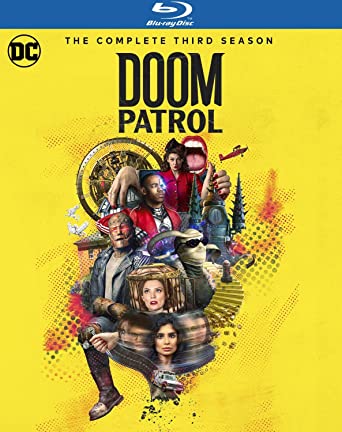REVIEW: Westworld: The Complete Fourth Season

I still remember being blown away by the 1973 Westworld with Yul Brenner’s android gunslinger. And when I heard Peron of Interest’s Jonathan Nolan and Lisa Joy were adapting the concept for HBO, I was keenly interested. With expanded budgets, improved technology, and being episodic, the concepts could be more deeply explored.
The first season, released in 2016, was not at all disappointing, with its rich cast, superb acting, and fine scripts. We got invested in the humans and androids, dubbed Hosts, alike, curious to see if these machines would truly gain sentience and then what…?
Now we’re at the end of the road, which proved far more meandering and disappointing. What it means to be human, as seen through the awakening eyes of the Hosts meant we were rooting for Dolores Abernathy (Evan Rachel Wood) and Maeve Millay (Thandiwe Newton), among others. The second season saw Delores leading a revolt, but it soon became a massacre, all the while, she sought her “daughter” Charlotte Hale (Tessa Thompson).

The less coherent third season brought in Engerraund Serac (Vincent Cassel), developer of the AI programming called Rehoboam, for Incite, Inc. It became a battle for freedom and self-destiny with sacrifices and bloodshed everywhere you looked.
Earlier this year, we received the final season, now available on disc from HBO in the usual assortments, including the 4K Ultra HD/Blu-ray/Digital HD code combo pack.

If Dolores was the vengeful force, Bernard (Jeffrey Wright) was the opposite, the Host who thought he was a man, who sought ways to coexist with man, not subjugate him. Over the course of the series their interactions were always good ones and this season didn’t disappoint.
We open seven years later, with mankind having lost the war, with Charlotte now in charge, with Serac gone. She uses a bioengineered virus to put humanity in her thrall. We then jump two decades to see what she has wrought. In a reversal of season one, Christina (NAME) begins to question her reality, learning she was created by Charlotte to write programs to maintain control over mankind. A new civil war threatens until things are revealed and a new status quo is established.
Despite some of convoluted plotting and overwrought scripting, the show continued to impress with great performances, notably Wood, Newton, Wright, and Ed Harris’ Man in Black. The supporting players led by Thompson were always up to the challenge including fine work from James Marsden and Ariana DeBose.

The 4K Ultra HD transfer is noticeably improved over the excellent Blu-ray in terms of sharpness and clarity, making this a desirable version for serious fans of the series. Similarly, the 1080p’s the DTS-HD Master Audio 5.1 track is one-upped by the Dolby Atmos audio on the 4K discs.
The Special Features identically appear on both the 4K and Blu-ray discs. These include the branded Creating Westworld’s Reality spots (all in 1080p): The Auguries (HD; 5:45), Well Enough Alone (HD; 5:27), Annees Folles (HD; 6:16), Generation Loss (HD; 4:56), Zhuangi (HD; 5:11), Fidelity (HD; 4:44), Metanoia (HD; 4:22), and Que Sera, Sera (HD; 5:03). Other features are Westworld On the Road (HD; 16:47), Westworld: An Exploration of Humanity (HD; 14:42), and Westworld‘s Temperance: A Set Tour (HD; 5:39) is a fun look at this season’s “playground”.
The series had terrif goals and lofty ideals but the delay between seasons didn’t help maintain interest and the writing never lived up to the promise. Still, this is a fitting finale and an excellent home video collection for your library.




















